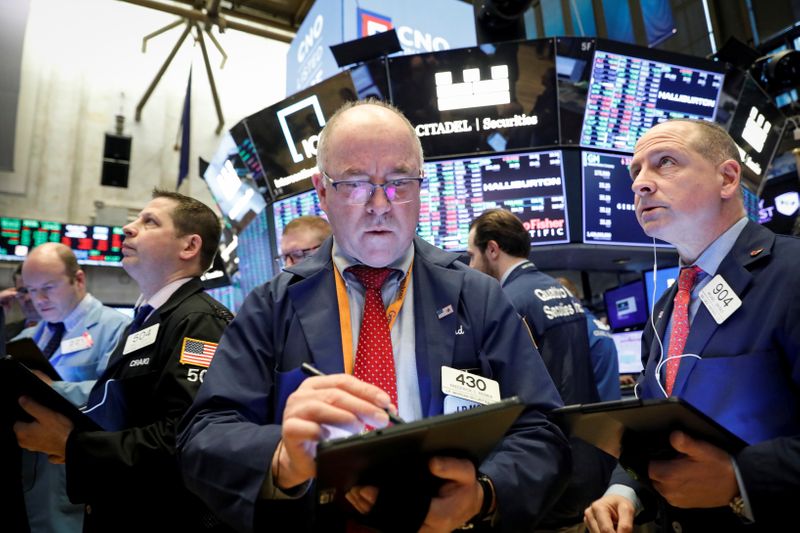This post was originally published on this site
https://i-invdn-com.akamaized.net/news/LYNXMPECBE0OL_M.jpg © Reuters. Traders work on the floor at the NYSE in New York
© Reuters. Traders work on the floor at the NYSE in New YorkBy Saqib Iqbal Ahmed
NEW YORK (Reuters) – Fears of a coronavirus-fueled slowdown have injected volatility back into markets, but some investors may be less exposed this time around.
The Cboe Volatility Index (), known as Wall Street’s fear gauge, jumped on Tuesday to a near 14-month high of 26.71. It recently traded at 25.71. Wall Street extended its losses on Tuesday, with the S&P 500 () on pace to shed about 5% over three sessions.
A jump of that magnitude can hurt investors who had bet that markets would remain calm. But such wagers have dwindled lately, while investors have been more eager to pick up insurance against sharp market swings.
In volatility futures markets, bets against stock market gyrations, stood at their lowest level since September last week, data from the U.S. Commodity Futures Trading Commission showed.
Through Thursday, a day before the most recent stock selloff began, total assets at the two largest exchange-traded products (ETPs) designed to benefit from rising volatility, the iPath S&P 500 VIX Short-Term Futures ETN (P:) and the VelocityShares Daily 2x VIX Short-Term ETN (O:), were at $1.78 billion, according to YCharts data.
Even before the latest selloff started, assets at VXX jumped by 35%, compared with a year ago, while those at TVIX rose by 22%, YCharts data showed.
By contrast, the largest short volatility ETP, the ProShares Short VIX Short-Term Futures ETF (K:), had assets of about $238 million, down 45% from a year ago.
“Most of the exposure was on the correct side for a move like this,” said Matt Thompson, managing partner at Chicago-based investment adviser Thompson Capital Management, which specializes in investments using VIX instruments.
Bets against volatility had become more popular in recent years, after an extended period of stock market calm in 2016 and 2017 boosted the returns for some short volatility ETPs, including the VelocityShares Daily Inverse VIX Short Term ETN XIV, attracting ever more speculative players.
That changed when a sudden drop in the U.S. stock market in February 2018 wiped out most of the value of these ETPs and led to the collapse of some products, including the VelocityShares Daily Inverse VIX Short Term ETN.
Recent positioning indicates that memories of that eruption may have cooled investors’ enthusiasm for betting against volatility, even as markets marched higher. Cautious investors also had ample time to pare back wagers against volatility or buy insurance against market swings as the coronavirus outbreak began to dominate headlines over the last several weeks, analysts said.
Further declines in stocks could spur selling by computer-driven funds that tend to sell their equity positions when market swings increase, said Parag Thatte, a strategist at Deutsche Bank (DE:).
Thatte expects a 3% one-day selloff to translate into roughly $13-$15 billion in selling of equities from some of these investors — known as volatility control funds — within a day.
Persistent volatility would draw selling from trend-following commodity trading advisors and risk parity funds, both of which have more assets than volatility control funds, he said.

